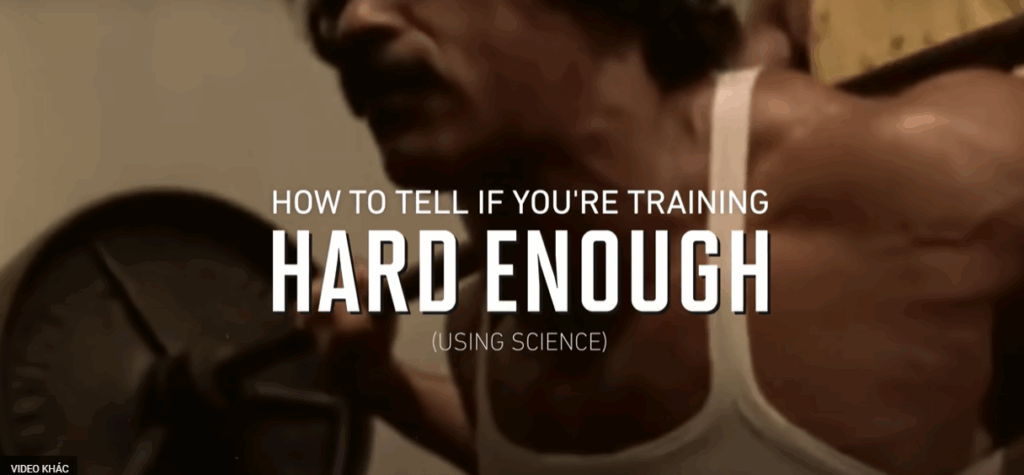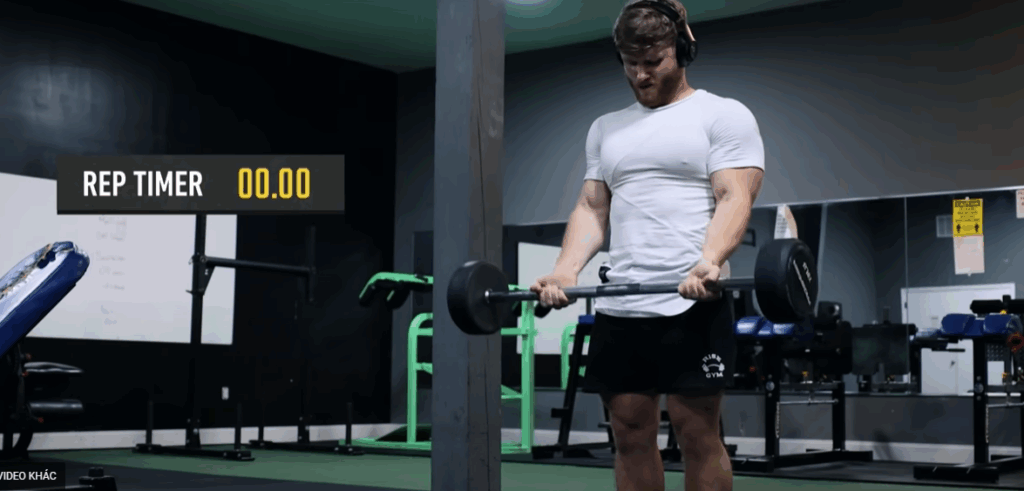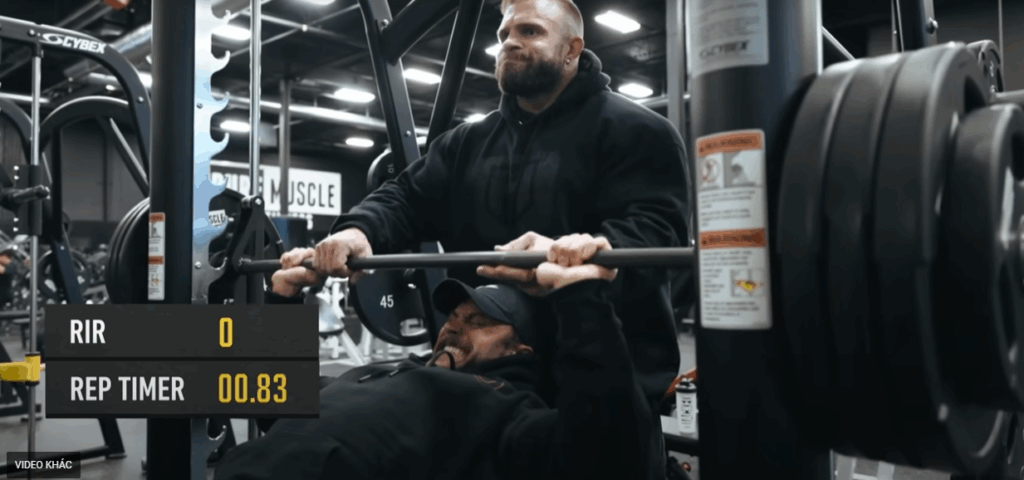ow Hard Should You Train to Maximize Muscle Growth? A Deep Dive into Effort, Failure, and Progress
When it comes to building muscle, one of the most common questions lifters face is: Am I training hard enough? On the surface, this sounds like a simple question, but the truth is far more complex. Understanding how close you need to push to failure—and how to assess that intensity accurately—is one of the most crucial factors in long-term hypertrophy.
Let’s break this down using real training examples, current scientific data, and practical coaching experience from decades in the gym.

What Is Training to Failure?
Before you can gauge whether your set is hard enough, you need to understand what “failure” actually means. In strength training, failure isn’t when a set starts feeling tough or uncomfortable—it’s when your muscles physically cannot generate enough force to complete another rep, even with maximal effort.
There are two widely accepted definitions:
- Absolute Failure: You can’t lift the weight, even if your form breaks down.
- Technical Failure: You can’t complete another rep without compromising your technique.
Most coaches prefer the second definition, especially in hypertrophy-focused training, because keeping proper form reduces injury risk and better targets the intended muscle group. However, it’s also important to recognize that some minor breakdown in form is inevitable as you get close to true muscular failure—especially on compound lifts.
Using Rep Speed to Gauge Effort
One emerging method to measure effort is by analyzing the speed of each rep. As you fatigue, reps naturally get slower. For instance, a 2019 study on the bench press found that as lifters approached failure, their final reps were 80% slower than their initial reps.
So if your rep speed is consistent from start to finish, you’re likely not training hard enough. Conversely, if the bar speed noticeably declines on the last few reps, you’re likely nearing failure. While this won’t give you an exact rep-in-reserve (RIR) count, it’s a helpful proxy—especially for compound lifts.

Real-Life Application: Could You Have Done More?
Let’s say you’re doing a set of leg presses and your last two reps feel tough, but they move at the same pace as your earlier reps. Chances are, you still had 2–3 reps left in the tank. On the other hand, if those last few reps slow down significantly, you’re probably pushing into that optimal zone for growth.
But here’s the nuance: Just because you can train harder doesn’t always mean you should.
Should You Train to Failure?
There are two main schools of thought here:
- High-Intensity Every Set: Some lifters take every set to failure. It’s simple, it ensures you’re not undertraining, and it’s time-efficient. This approach can work, especially for those with limited time or minimal training volume.
- Moderate Effort, Higher Volume: Others prefer staying 1–3 reps shy of failure and using that energy to perform more total volume throughout the week. Numerous studies show that, up to a point, higher training volume leads to better hypertrophy outcomes—especially when recovery is managed well.
A meta-analysis by James Krieger showed that 10+ weekly sets per muscle group tend to produce better muscle gains compared to lower volumes. But that volume must be recoverable, which means not pushing every set to the brink.
What the Science Says About Training to Failure
A 2021 review by Grgic et al. pulled data from 15 studies and found no significant difference in muscle growth between groups that trained to failure and those that stopped short—so long as they were within a few reps. However, those last two reps before failure are significantly more fatiguing, which can increase recovery demands and interfere with subsequent training quality.
That’s why the sweet spot for most hypertrophy-focused training seems to be somewhere between 0–3 RIR (or an RPE of 7–10). This provides enough intensity to stimulate growth while allowing for sustainable volume across the week.
Understanding RPE and RIR
- RPE (Rate of Perceived Exertion): A scale from 1 to 10 that tells you how hard a set felt.
- RPE 10 = All-out effort, no reps left.
- RPE 9 = One rep left in the tank.
- RPE 8 = Two reps left, and so on.
- RIR (Reps in Reserve): The number of reps you estimate you could still do before hitting failure.
If you’re working in a higher rep range (e.g., 12–20), you’ll want to be very close to failure, since light weights require full muscle fiber recruitment through fatigue. But with heavier loads, leaving 2–3 reps in reserve can still stimulate growth effectively.

Improving Your Effort Awareness
Many lifters overestimate how close they are to failure. To calibrate your RPE/RIR accuracy, occasionally perform an “anchoring” set—where you push to true failure. See how many reps you actually had left when you thought you were at an RPE 9. This gives you a clearer mental benchmark for your future training sets.
Another method is filming your sets and watching how rep speed changes. If there’s no slowdown in your last few reps, it’s a sign that you may not be training hard enough—regardless of how it feels in the moment.
When to Push to True Failure
Training to failure isn’t useless—it just needs to be used strategically. Here are a few times when it makes sense:
- On the last set of an isolation movement (e.g., lateral raises, curls).
- During the final week of a training block.
- On machine-based exercises where form breakdown is less dangerous.
- When trying to build mental toughness and break plateaus.
But pushing compound lifts like squats or deadlifts to failure every week can backfire due to recovery issues and increased injury risk. Save the all-out sets for lower-risk movements or key testing phases.
Final Thoughts: Find What Works For You
There’s no one-size-fits-all rule when it comes to training effort. Some lifters make heavy loads look easy until they hit a wall, while others show visible struggle from mid-set. Whether you choose to train to failure, stop at 2 reps shy, or auto-regulate with RPE depends on your goals, experience, recovery capacity, and overall program structure.
If your training is producing steady progress, muscle gain, and recovery is manageable, you’re likely in the right zone.
The bottom line? Don’t rely on guesswork. Track your performance, observe your rep speeds, and occasionally test your limits. Learning to measure and control your training intensity is a key skill that separates intermediate lifters from those who reach elite levels of physique development.



